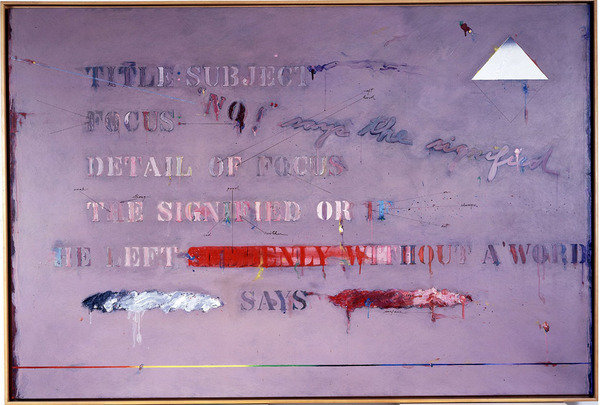Two exhibitions
dal 23/10/2013 al 11/4/2014
Segnalato da
Shusaku Arakawa
Maria Bartuszova
Louise Bourgeois
Geta Bratescu
William Copley
Hans-Peter Feldman
Neil Jenney
Anselm Kiefer
Yayoi Kusama
George Segal
Yayoi Kusama
23/10/2013
Two exhibitions
Goetz Collection, Munich
To mark its 20th anniversary Sammlung Goetz opens its archive to show more than 50 works by ten artists who have not been exhibited for many years, or in some cases, ever. The slide installation Walking Piece, 1966, by Yayoi Kusama, is the oldest work of media art in the collection.

Happy Birthday! 20 years of Goetz Collection
This year, Goetz Collection celebrates its 20th anniversary. What better reason could there be for a retrospective of important artists who have greatly influenced a younger generation?
To mark this anniversary, Sammlung Goetz opens its archive to show more than 50 works by ten artists who have not been exhibited for many years, or in some cases, ever. There will be a reunion with old friends in specially set up artist rooms as well as some new discoveries in exciting comparisons. These include, for example, an early figurative installation by Yayoi Kusama from 1966, a large shadow play by Hans-Peter Feldmann and sculptures by Louise Bourgeois from all creative periods. In addition to installations, paintings and sculptures, works on paper will also be presented. These were the starting point of the collection.
Artists: Shusaku Arakawa, Mária Bartuszová, Louise Bourgeois, Geta Brătescu, William Copley, Hans-Peter Feldmann, Neil Jenney, Anselm Kiefer, Yayoi Kusama and George Segal
----------
October 24, 2013 – February 2014
Yayoi Kusama
Walking Piece, 1966
Projection on the outer wall of the gallery building
The slide installation Walking Piece, 1966, by Yayoi Kusama, is the oldest work of media art in Sammlung Goetz. It depicts the Japanese artist as she strolls through New York, away from the city's main avenues. Clothed in a traditional kimono and carrying an umbrella decorated with plastic flowers, Kusama seems to be a very alien presence in this western metropolis.
Yayoi Kusama was raised in a strict, traditional Japanese home. As a result of pressure from her family, she developed mental illness at a young age. It showed itself as hallucinations of dots and nets that she saw everywhere in her environment. The boundaries between subjects, objects and the environment seem to dissolve into each other. Due to her delusions, Kusama began psychiatric treatment but simultaneously expressed in her art this new experience of the dissolution of borders. The so-called "Polka Dots" that she painted on pictures, furniture, sculpture and walls thus became her trademark.
Kusuma soon began to gain her first successes. Her works were exhibited in the 18th Biennial in the Brooklyn Museum in 1955. To escape the pressure from her family as well as the conservative ideas of art in Japan, Kusama moved to New York in 1957. Although she soon established herself on the international art scene with her happenings and performances, she felt alienated in the huge city. The slide projection Walking Piece, which consists of 25 individual images created nine years after her move, focuses on feelings of homelessness and foreignness.
Yayoi Kusama (born in 1929 in Matsumoto, Nagano Prefecture, JP, lives and works in Tokyo, JP).
Image: Shusaku Arakawa, Untitled (Nr. 2), 1973, acylic on canvas, photo: Barbara Deller-Leppert, München
Press contact:
Cornelia Gockel Tel. +49 89 - 9593969 - 44 presse@sammlung-goetz.de
Goetz Collection
Oberföhringer Straße 103 81925 Munich
Visitation is possible during opening hours BY APPOINTMENT ONLY:
Thursday & Friday: 2 – 6 p.m.
Saturday: 11 a.m. – 4 p.m.



